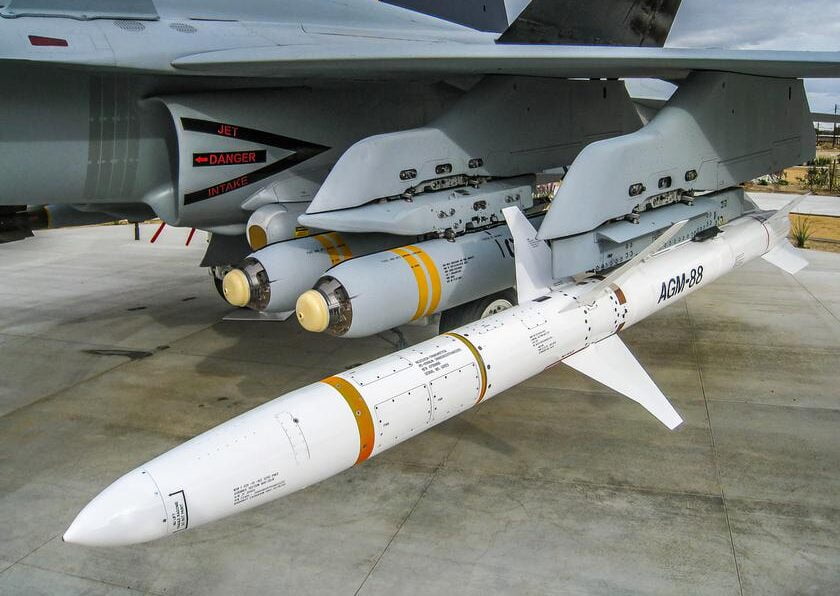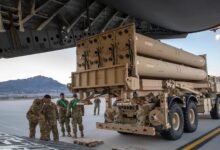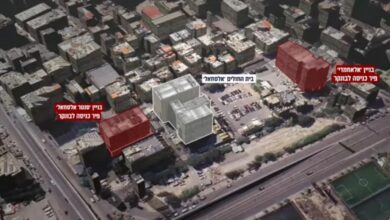Explained: What Is AGM-88 HARM, A New Anti-Radar Missile That The US Has Given To Ukraine?

- The Russia-Ukraine conflict was the first time the weapon has been employed by a military other than the US. Given the sparse inventory of aircraft in the Ukrainian Air Force, its utility is still debatable.
- The AGM-88 HARM may theoretically be used in a restricted mode in a Russian-made aircraft. However, due to the protracted fighting, it may not have been possible for Ukraine to do the necessary amount of quick research and development.
On Monday, August 8, Colin Kahl, the Under Secretary of Defense for Policy of the United States, acknowledged that Washington had given Ukraine certain “anti-radiation missiles” that could be fired from some Ukrainian Air Force aircraft. The declaration has given credence to Russian claims that an American anti-radar missile, the AGM-88 HARM, which is a component of NATO’s arsenal, was employed in the theatre of battle. What kind of missile is it, and what potential effects might it have on the ongoing conflict in Ukraine?
What is the AGM-88 HARM missile?
High-Speed Anti-Radiation Missile is what the AGM-88 HARM air-to-surface missile stands for. It is a tactical weapon launched by fighter jets with the capacity to locate and target radiation emitted by adversarial radar installations with surface-to-air detection capabilities.
The missile was was created by Texas Instruments, a company with its headquarters in Dallas, but it is presently produced by Raytheon Corporation, a significant American defence contractor. Northrop Grumman, with headquarters in Dulles, Virginia, produces an improved version of the weapon.
The AGM-88 HARM is only 10 inches in diameter yet is 14 metres long. It contains a fragmentation-type warhead that is tailored for radar targets and weighs about 360 kg. Additionally, it contains a solid state digital CPU and an anti-radar homing seeker broadband RF antenna and receiver. The missile has a greater than 100 km range.
How do we know that it was being used against Russia?
Russian social media users have been circulating open-source information on the discovery of AGM-88 HARM remnants close to a Russian surface-to-air missile site on Telegram for the past few days. The photographs of the missile’s apparent remains appeared to display real serial numbers, which open source intelligence experts linked to the AGM-88 HARM. These deductions have now been verified by the US statement.
Analysts who study the military have thought about this issue. It appears that the AGM-88 HARM cannot be installed on the Russian-origin aircraft that Ukraine has in its fleet and that only Western military forces possess the necessary fighter planes to fire these missiles. The Tornado ECR, F-16CM Block 50, and F/A-18-EA-18G are among the NATO aircraft in Europe that can launch the AGM-88 HARM missiles.
The Russia-Ukraine conflict was the first time the weapon has been employed by a military other than the US. Given the sparse inventory of aircraft in the Ukrainian Air Force, its utility is still debatable. The report added that there is conjecture that the missiles may have been fired by NATO aircraft covertly assisting the Ukrainian forces in combat as Ukraine does not possess aircraft that are known to be compatible with the weapon.
Is there no way the missile can be used by Ukraine’s Russian-origin aircraft?
The AGM-88 HARM may theoretically be used in a restricted mode in a Russian-made aircraft. However, due to the protracted fighting, it may not have been possible for Ukraine to do the necessary amount of quick research and development. A land-based variant of the missile had been tested by Northrop Grumman, but it failed to meet the necessary criteria.







Facebook Comments